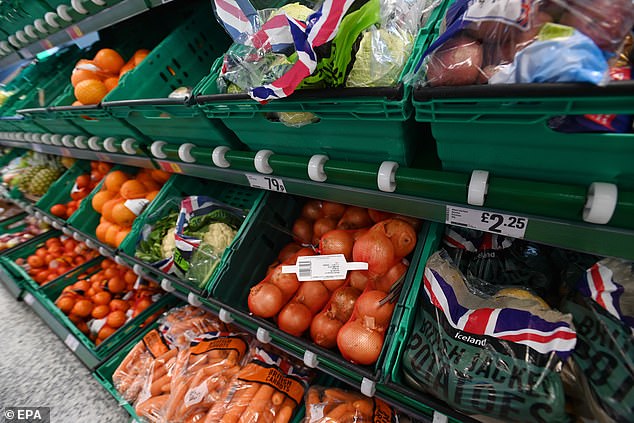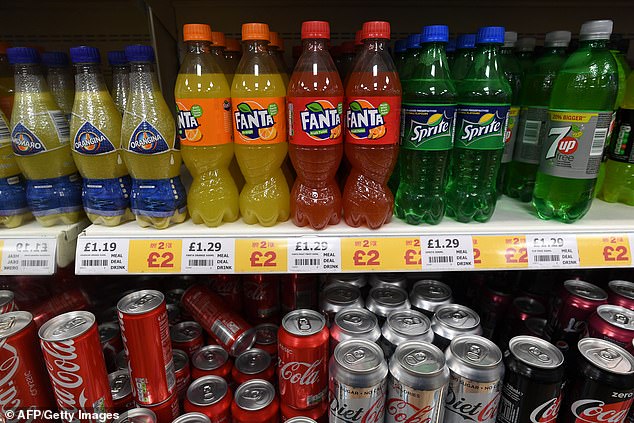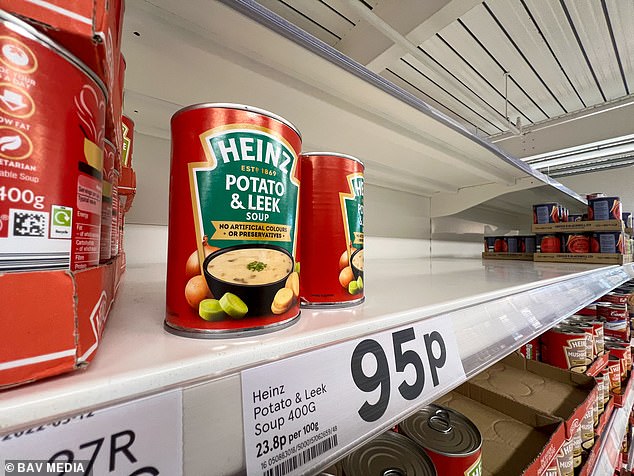DON’T give up cheese, add nuts to tinned soup, and use these clever shopping hacks to avoid temptation: Doctor shares 10 tips for a healthier 2024
Being healthier will be a New Year's resolution for millions.
But despite your belief that your shopping cart is full of nutritious food, it can also be full of junk, according to Dr. Michael Mosley.
His new Channel 4 series, Undercover Doctor: The Secrets Of Your Big Shop, reveals that families are convinced their food shops are healthy, when in reality there are crisps, biscuits and fizzy drinks lurking among their fruit, vegetables and cereals.
Dr. Mosley said the location of sweet treats at the end of aisles, as well as low prices and confusion over what is actually healthy, is driving Britons to unhealthy treats in the cart without thinking.
Here he shares his top tips for healthy food shopping – from buying cheese and nuts to add to soup to never stepping into a supermarket when your stomach is growling.
His new Channel 4 series, Undercover Doctor: The Secrets Of Your Big Shop, reveals that families are convinced their food shops are healthy, when in reality there are crisps, biscuits and fizzy drinks lurking among their fruit, vegetables and cereals.

Try to fill the main section of your shopping cart with healthy foods (fruits, vegetables, legumes, proteins, whole grains) and reserve the small section at the front for 'treats'
Shop wisely
Never go to the supermarket when you are hungry because you will probably be tempted to buy junk food. Make a list and stick to it.
Take plenty of time to check the labels
Check the calories; which foods contain a long list of strange-sounding ingredients (this could be a sign that they are highly processed); or that score 'red' in the traffic light system.
Stick to the perimeter of the store
Where you'll find fruit, vegetables, meat, fish and dairy products – and hurry along the glitzy central aisles where you'll find tempting treats.
Buy just a few treats
Try to fill the main section of your cart with healthy foods (fruits, vegetables, legumes, proteins, whole grains) and reserve the small front section for “treats.”
Record less pop
Reduce carbonated drinks (whether diet drinks or full sugar drinks). Drink a glass of water with every meal.
This will curb your appetite, keep you hydrated, increase energy levels and reduce cravings for unhealthy foods.

Reduce carbonated drinks (whether diet products or full sugar). Drink a glass of water with every meal
Make tap water delicious by cooling it with slices of lemon, orange or cucumber, sprigs of mint or berries.
Upgrade your breakfast
Replace highly processed breakfast cereals with oatmeal porridge that you can boil or soak in milk overnight, then add seeds, berries and yogurt in the morning.
Instead of jam/honey on white toast for breakfast, try fiber-rich rye bread topped with almond butter and thin slices of apple.
Refill cans
Add canned legumes to your cart and put half a can of chickpeas in your lunch salad to increase fiber and protein.
This will keep you feeling full all afternoon.
Add nuts to soup
Make canned soup bigger by adding nuts or seeds, and eat with oatcakes and a little cheese.

Make canned soup bigger by adding nuts or seeds, and eat with oatcakes and a little cheese
Shake up your meal deal
If your normal workday lunch is a 'meal deal' (sandwich, snack and soft drink), choose whole wheat bread with a lean protein filling (chicken or tuna), water instead of a sugary drink and popcorn or nuts instead of chips or chocolate.
Give unhealthy meals a makeover
Make delicious foods healthier.
For example, pizza can be layered with additional vegetables (bell peppers, red onion, zucchini, broccoli) to provide fiber and nutrients, and add chicken or ham for more protein.
If you're making spaghetti bolognese, add plenty of onions and grated carrot to your tomato mixture.

